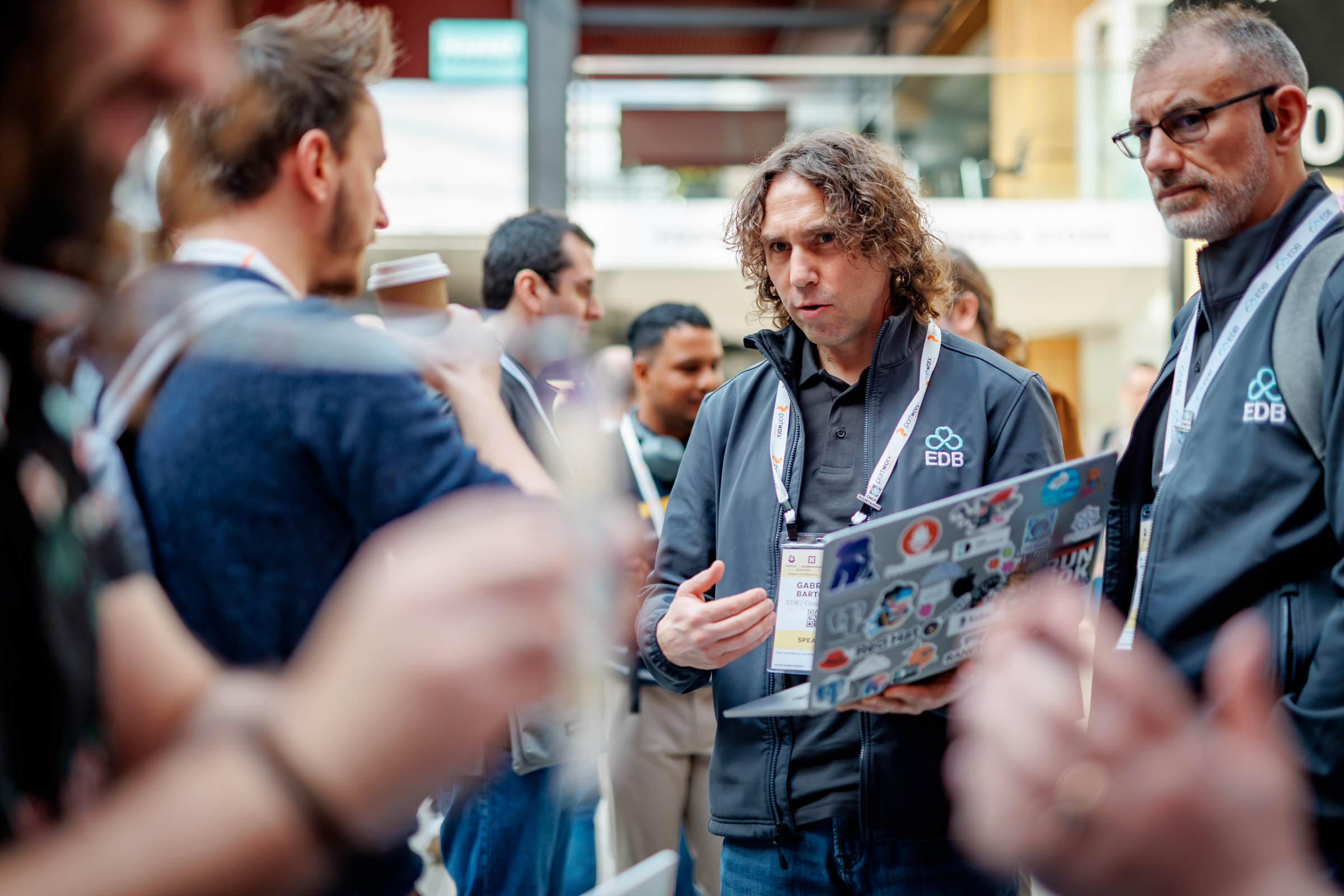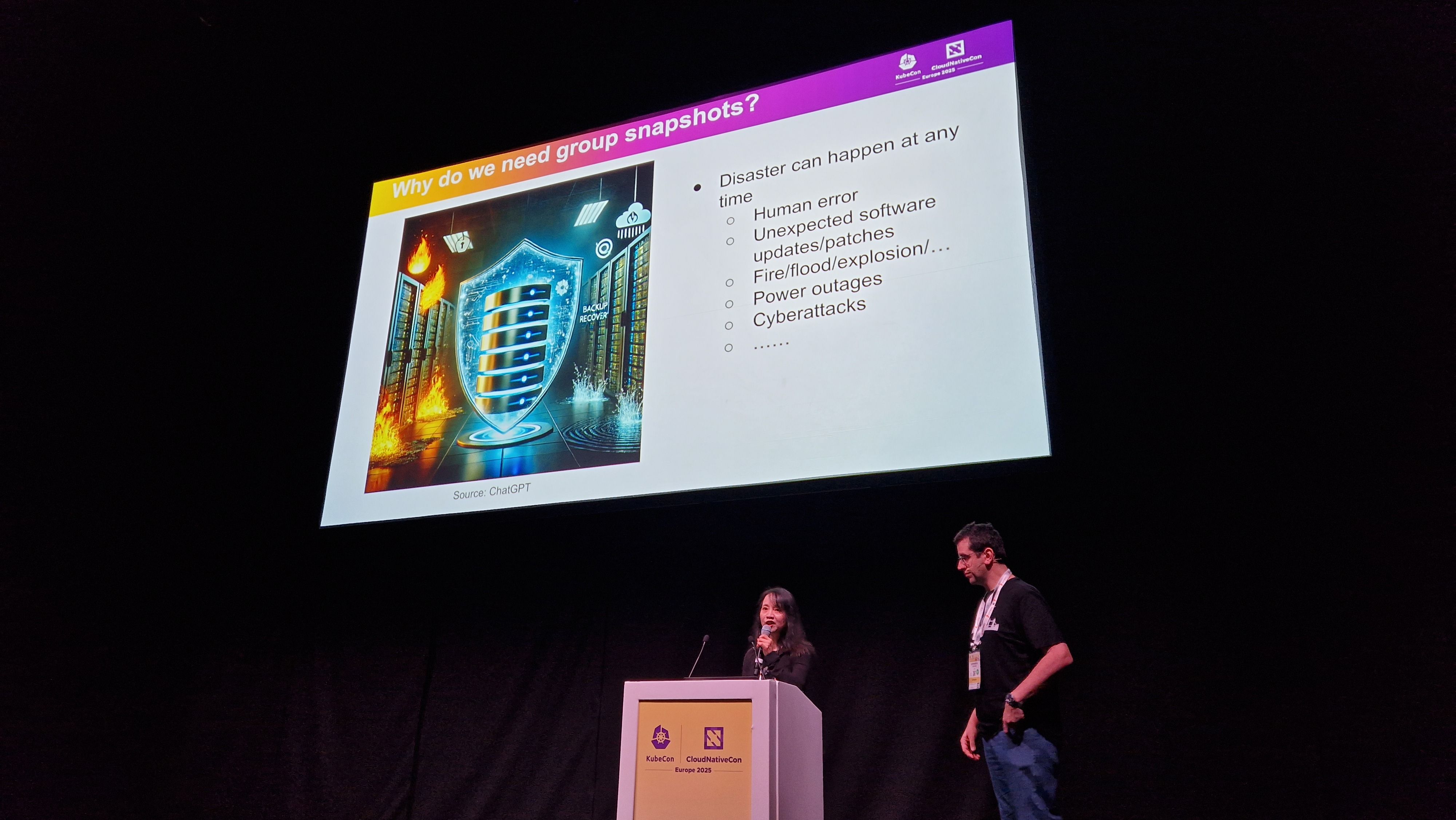Inside the booth conversations, platform breakthroughs, and subtle signals shaping the future of data on Kubernetes
There’s always a rhythm to KubeCon: the steady churn of sessions, the high energy of the floor, the unplanned conversations in the coffee line that turn into something more interesting than a panel. But KubeCon Europe 2025 felt different.
Not just busier (though it was, with over 12,500 people in attendance), and not just louder (though it was that, too). It felt like the Kubernetes ecosystem is finally settling into a new phase. Less experimentation, more grounding. Less “can we do this?” and more “how do we do this well?”
The conversation kept circling back to the same themes: security, AI workloads, real-world complexity, declarative control, and the rising importance of data-layer decision-making. Security, especially workload identity and runtime isolation, showed up everywhere, from container runtimes to policy engines to real-time posture management.
What’s clear is that Kubernetes isn’t just a container orchestrator anymore. It’s becoming a foundation for real workloads—AI included. A control plane for autonomy. A platform for platforms.
Which means that the expectations are higher now, and so is the impact.
EDB in the Room and on the Stage
The ideas shaping the event—declarative control, platform readiness, AI foundations—weren’t just themes we observed; they were the work we brought with us.
Simon Metson opened Data on Kubernetes Day with a direct ask to the room: if Kubernetes is ready for data workloads (and it is), how do we help enterprises make it their default choice? That means less validation, more value. Less marketecture, more clarity. His keynote laid out what adoption actually requires, from the core tech to the ecosystem to the shared language that brings developers and decision-makers into the same room.
Later in the week, Simon joined compliance leaders from Red Hat, IBM, and Sunstone Secure for a panel on AI-driven automation. The message: compliance isn't a blocker when it’s built into the platform. With the right abstractions, real-time monitoring, and agentic workflows, the move from “audit” to “always-on” is not only possible, but already underway.
Gabriele Bartolini joined a panel on Kubernetes as a foundation for AI, alongside speakers from Google, Confluent, Constantia, and SiliconANGLE. While others spoke to infrastructure evolution, Gabriele brought a view shaped by production experience: what it really takes to make databases part of a composable AI stack, and where things tend to break when theory meets ops.
Leonardo Cecchi took the stage with VMware by Broadcom to walk through Kubernetes’ VolumeGroupSnapshots, a long-awaited capability for consistent backups across multiple volumes. For data teams managing complex stateful workloads, the ability to control write-order consistency is more than a nice-to-have. It’s what separates "it runs" from "it recovers cleanly when it counts,” and it’s a clear signal that EDB is shaping the emerging standard for production-grade database workloads and resilient recovery in Kubernetes environments.
And then there were the demos. At the EDB booth, attendees stepped into live examples of what’s possible right now with CloudNativePG and EDB Postgres AI for Kubernetes: one-line PostgreSQL upgrades, seamless migrations using logical replication, dynamic Kubernetes permissions, failover and recovery, storage integration. No hype. Just hands-on, real conversations about how people are solving the same problems, in very different contexts.
The momentum was clear. CloudNativePG is now well past the early adopter phase. With CNCF Sandbox status, 5,700+ GitHub stars, and growing visibility across industries, the project is proving that PostgreSQL can meet Kubernetes where it is and scale with it.
Kubernetes Is Growing Up—So Are the Stakes
There was a unanimous consensus across the event: Kubernetes is no longer just the scaffolding. It’s becoming the structure—especially for platform teams building systems designed to scale, interoperate, and endure. OpenTelemetry is becoming non-negotiable. SRE and platform certifications are formalizing the craft. And platform engineering is stepping into the spotlight as a discipline with real frameworks, expectations, and impact.
That shift raises new questions: How do we stay fast without losing control? How do we stay portable without sacrificing trust? How do we build infrastructure that’s composable, observable, and secure enough to support real workloads, not just toy clusters?
Many of the most thoughtful conversations returned to the same underlying answer: open standards, declarative tooling, and modular infrastructure—where each component does its job well, and plays its part in a larger system that just works.
The shift isn’t just technical. It’s architectural. Ownership is back in the room, both as a concept and as a design goal. And for database teams in particular, that shift brings Postgres into focus. Not as an outsider to the platform conversation, but as a first-class citizen part of the stack itself.
Where We Go From Here
This next phase isn’t about adding more features. It’s about making better choices.
KubeCon made it clear: the organizations that thrive in this landscape won’t be the ones chasing the latest AI buzzwords. They’ll be the ones building on infrastructure they understand and control. That’s where sovereignty matters, not as a slogan, but as a system design. One that lets teams choose where they run, how they scale, and which parts of the stack they want to own outright.
At EDB, we’re committed to making those choices real. CloudNativePG’s success is one part of that. So is the work we’re doing around secure upgrades, extension packaging, permission models, and automated compliance—tools that don’t just prove Kubernetes can run Postgres, but that it can run it well, at scale, without vendor lock-in.
We’re proud to be part of a community that’s asking better questions, setting a higher bar, and building toward platforms that work on your terms. This isn’t the end of the conversation, but it feels like we’re getting to the part that matters.





